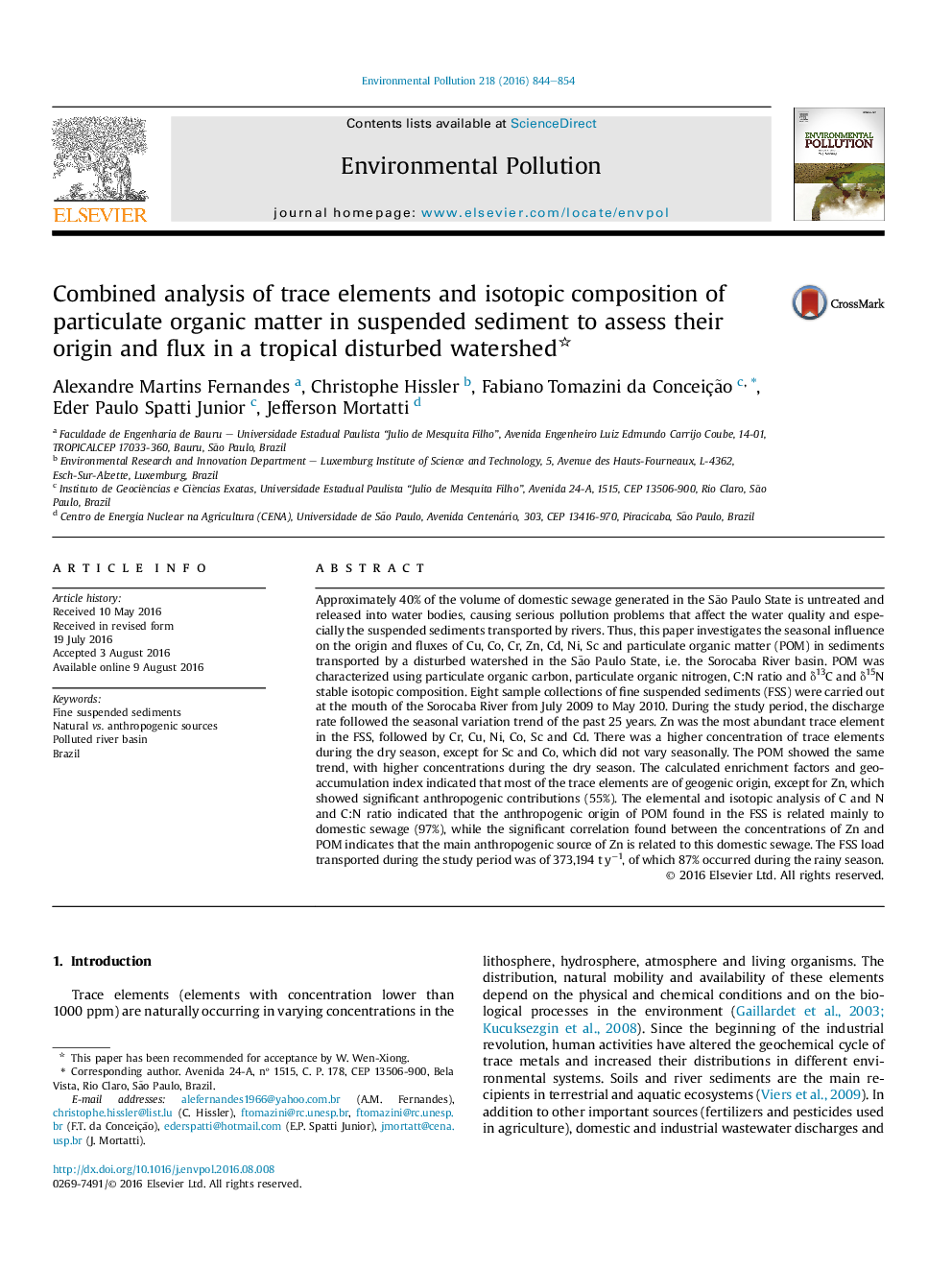| Article ID | Journal | Published Year | Pages | File Type |
|---|---|---|---|---|
| 6314739 | Environmental Pollution | 2016 | 11 Pages |
â¢Combined chemical and isotopic analysis in fine suspended sediments was carried out.â¢This integrated analysis allows a better understanding on environmental processes.â¢The origin of Cu, Cr, Cd and Ni was associated to natural sources.â¢Isotopic analysis indicated a relationship between organic matter and domestic sewage.â¢Zn showed a significant anthropogenic contribution related to domestic sewage.
Approximately 40% of the volume of domestic sewage generated in the São Paulo State is untreated and released into water bodies, causing serious pollution problems that affect the water quality and especially the suspended sediments transported by rivers. Thus, this paper investigates the seasonal influence on the origin and fluxes of Cu, Co, Cr, Zn, Cd, Ni, Sc and particulate organic matter (POM) in sediments transported by a disturbed watershed in the São Paulo State, i.e. the Sorocaba River basin. POM was characterized using particulate organic carbon, particulate organic nitrogen, C:N ratio and δ13C and δ15N stable isotopic composition. Eight sample collections of fine suspended sediments (FSS) were carried out at the mouth of the Sorocaba River from July 2009 to May 2010. During the study period, the discharge rate followed the seasonal variation trend of the past 25 years. Zn was the most abundant trace element in the FSS, followed by Cr, Cu, Ni, Co, Sc and Cd. There was a higher concentration of trace elements during the dry season, except for Sc and Co, which did not vary seasonally. The POM showed the same trend, with higher concentrations during the dry season. The calculated enrichment factors and geoaccumulation index indicated that most of the trace elements are of geogenic origin, except for Zn, which showed significant anthropogenic contributions (55%). The elemental and isotopic analysis of C and N and C:N ratio indicated that the anthropogenic origin of POM found in the FSS is related mainly to domestic sewage (97%), while the significant correlation found between the concentrations of Zn and POM indicates that the main anthropogenic source of Zn is related to this domestic sewage. The FSS load transported during the study period was of 373,194 t yâ1, of which 87% occurred during the rainy season.
Graphical abstractDownload high-res image (256KB)Download full-size image
